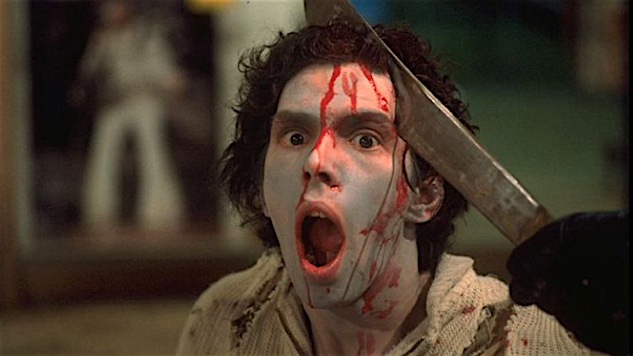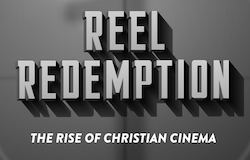Trying Not to Come Back, by Bob Connally
16 Aug

It’s only been in the last couple of years that I have really started to embrace horror. I haven’t become a full-on gorehound, but I have developed an appreciation for horror movies and what they can deliver that is unique to any other genre. The biggest obstacle I had was the misconception that horror movies, by and large, did not care about their characters. While this may be true of many slasher films (the original Friday the 13thbored me to tears), it was an idea that had gotten into my head and it took a long time for me to realize I was wrong. The thing is, even slashers with little to no character development can be fun in their own ways if the filmmaker is inventive. After all, if I can love big, dumb action movies like Sudden Death and “The Greatest Movie Ever Made,” Commando, then I can enjoy a horror movie that delivers on the same level.
However, long before I started to dive into the genre, there were exceptions. The most notable being George A. Romero’s 1978 (or ’79 if you’re going by its U.S. theatrical release) masterpiece, Dawn of the Dead. Released ten years after Romero’s groundbreaking Night of the Living Dead (a film that invented the zombie movie as we have come to know it), Romero showed how much he had grown as a filmmaker over that decade. I first saw Dawn in 2004. I had not yet seen Zack Snyder’s remake but I had seen Night and only a couple of weeks earlier I had gone on opening night to see Shaun of the Dead. So despite being largely indifferent towards horror movies, I had reason to believe I would enjoy Dawn.
Dawn of the Dead is a movie I have been wanting to write about for some time but given how many articles have been written over the years about its commentary on American consumerism, I really didn’t know what I could say that hasn’t been driven into the ground over the past 40-plus years. But the obvious answer has been right in front of me all along, triggered by watching Robert Meyer Burnett talk about the film recently on his YouTube channel. My love of Dawn of the Dead isn’t based on a love of zombies or gore, but on its storytelling and its respect for its characters.
The opening scene (full spoilers for a 42-year old movie ahead) involving a television newsroom devolving deeper into chaos by the second immediately pulls the audience in and lets us know that the situation is dire. When we see the situation itself, a SWAT team is violently charging into an apartment complex, shooting not only the undead, but some of the living as well. As it happens, one of the more levelheaded members of the SWAT team, Roger (Scott H. Reiniger), is a friend of the TV station’s helicopter pilot, Stephen (David Emge). With the zombie uprising growing rapidly worse, Stephen and his girlfriend, Fran (Gaylen Ross), who works as an executive at the station, meet up with Roger and his new friend, and possibly the only other sane man left on the SWAT crew, Peter (Ken Foree). The four fly around looking for a place to hide out temporarily when they find a shopping mall in suburban Pennsylvania. The fact that it needs to be explained by one character to another that it’s, “one of those indoor shopping centers” (presumably so Romero can explain it to the segment of the audience who might not understand either), shows how malls had not quite become what they would in just a few years time.
The four soon realize just how many things they’ll have access to (food, supplies, guns!) if they stay put and determine if they can take out the zombies already lumbering around inside that they can essentially turn the mall into a fortress. It’s here that Romero’s not so subtle but still incredibly effective critique of consumerism comes front and center. As I noted above though, that ground has been thoroughly covered. This is also the point in the film when Romero starts to develop the characters more fully. The most interesting and effecting of the four character arcs belongs to Roger.
When we first see Roger moments before the raid on the apartment building, he’s calmly trying to give encouragement to a rookie officer and disapproves of the cavalier attitude of some of his more trigger happy colleagues. After the raid, Roger is shaken up but still able to keep himself together. Soon after arriving at the mall, however, he’s starting to have fun running around, taunting zombies before shooting them in the head. Having a little too much fun. But it’s not mere recklessness, something Peter chastises him for later on in a critical moment. Roger is coming apart at the seams and it’s as though he’s trying to convince himself this is all just a game. Sadly, this costs Roger dearly as he is the first of the four to be bitten and anyone who knows the standard rules of zombie films knows that Roger is doomed.
This moment was not only genuinely heartbreaking for me the first time I saw it, it still saddens me every time I watch it (and I’ve watched Dawn of the Dead a lot). Unlike many bite victims, however, Roger’s demise isn’t a matter of moments. It’s spread out over a few days. Reasonably, the characters don’t know the “rules” so Peter, Fran, and Stephen do what they can to try to help him survive. Unfortunately and inevitably though, he deteriorates, mentally regressing through it all before finally telling Peter, “I’m gonna try…not to… come back.” Reiniger’s delivery of this line is absolutely haunting. Seconds later, Roger finally does succumb but despite his best hopes, he slowly rises up from under the blanket he’s been covered with. There’s a fear and confusion on his face as zombie Roger starts to look around at the world for the first time. It does not last long as a crushed Peter does what he must, shooting his friend in the head.
The other three leads of the film have fascinating journeys of their own, as Stephen and a pregnant Fran prepare the corner of the mall they now call home for a baby. Peter meanwhile tries to keep himself physically and mentally fit, going up to the roof to exercise with some solo racquetball. Nothing lasts forever though, and when a biker gang discovers that three people are in the mall and that they are keeping it to themselves, they charge in. Peter understands that “They’re after the place,” not them, so he decides to lay low. Selfishly, Stephen attempts to defend what he feels is rightfully theirs from the bikers all while more and more zombies flood the mall. Stephen is attacked in an elevator and given the severity of his bites, becomes a zombie mere moments later. Emge then delivers quite possibly the greatest zombie walk in cinematic history in the film’s climactic moments.
In the end, Fran (who has learned to fly the helicopter from Stephen) goes to the roof to fly away, while a despondent Peter gives up. Not wanting to be bitten and come back, he holds a pistol against his temple as Fran starts the chopper’s engine. But before she’s gone, Peter has a change of heart and as heroic music plays, he fights his way through a gang of the undead to make it to the helicopter. Romero makes it clear this is hardly a happy ending, however. It’s unclear where the two can go where they might be safe and when Peter asks how much fuel they have left, Fran answers, “Not much,” to which Peter can only shrug and say, “All right.”
I always say that Dawn of the Dead isn’t just a great horror movie, it’s a great movie with no qualifiers. Over the past few years, thanks in large part to a friend of mine who loves movies as much as I do and who happens to be an especially big fan of horror, I’ve gone much deeper into the genre as a whole. Now, I talk about The Return of the Living Dead, From Beyond, and Oculus with great enthusiasm and without putting them in a box as though horror is lesser than anything else.
We all have our blind spots and misconceptions about certain kinds of movies. If yours is horror, give the original Dawn of the Dead a look. It might just open you up to a whole new world.



No comments yet